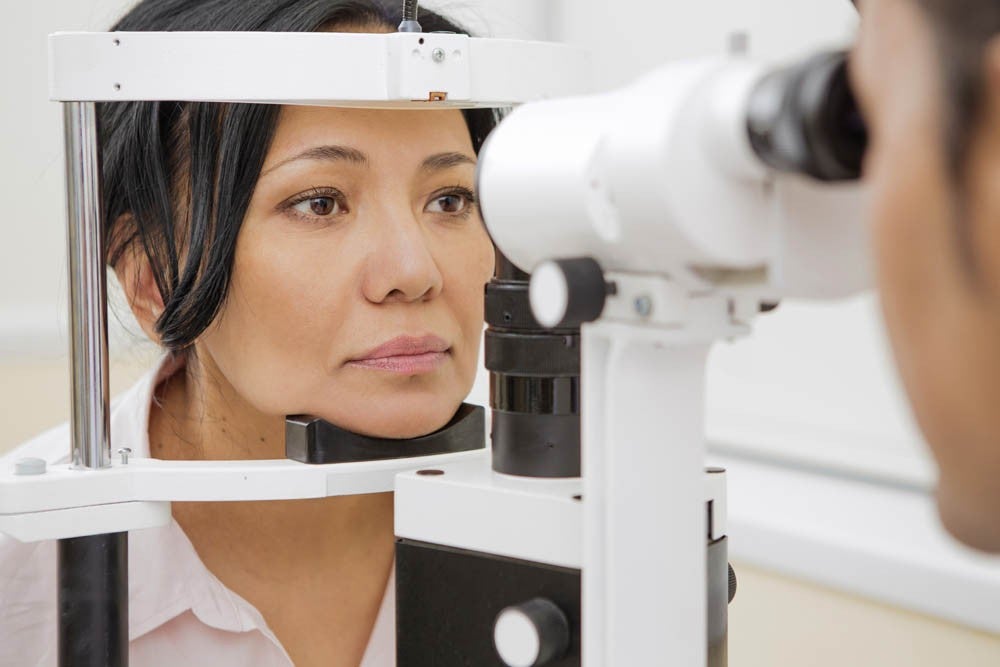Eye exams: why you should get one and how to prepare

If you’re taking good care of your health, you probably know the importance of an annual physical. But regular eye exams are also critical to keep your vision in check. They can also catch any eye problems or diseases early, when they’re most treatable. Here’s why: 93 million adults in the U.S. are at high risk for serious vision loss, and many signs of serious diseases, like high blood pressure, can be detected through an eye exam. Let’s learn a bit more about this important health screening.
Who does an eye exam?
Both optometrists and ophthalmologists do eye exams in a traditional medical office setting. An optician makes corrective eyewear, but they’re not medical professionals and don’t do eye exams.
Who should get their eyes checked more often?
Diabetic retinopathy is a condition that’s specific to people with diabetes and one more reason to get your eyes checked more often — at least once a year according to the American Diabetes Association (ADA). Diabetes increases your risk for common eye conditions, such as glaucoma or cataracts, and that’s why the ADA recommends that people with diabetes get screened every one to two years. And since genetics play a role in many eye conditions, check with your doctor about the best exam schedule if you have a family history of eye problems.
How to prepare for your exam
Bring your current glasses, sunglasses, and/or contacts to your exam. You’ll also want to bring a list of current medications — prescription and otherwise — as well as any questions you have about your vision.
What will get checked in an eye exam?
A comprehensive eye exam can ensure your vision is as clear as possible. It can also help identify eye diseases, many of which don’t have any obvious early symptoms, like glaucoma.
- Snellen chart test
The most common part of an eye exam is to check your vision using a Snellen chart (the famous alphabet chart). Regular exams help your doctor observe how your vision is changing over time and make sure you get the most accurate prescription possible. Make sure to bring your glasses or contact lenses to the appointment if you wear them.
- Eye muscle test
Besides assessing your vision, your doctor will also check the health of your eyes. One part of this is getting your medical history to note any genetic issues that might affect your eyes. Your doctor will administer an eye muscle test, asking you to follow a small light with your eyes. This allows them to look for any weakness or poor coordination.
- Pupil dilation test
Your doctor will also dilate your eyes with drops. This allows them to see inside the eye and examine the optic nerve and retina. This test helps them prevent and treat eye conditions that could lead to vision loss. Make sure to bring your sunglasses to wear when you leave to help your eyes adjust to sunlight.
Extra tests for older patients
If you’re over 60, you may want to get extra eye testing. These tests will look for conditions such as glaucoma, cataracts, and age-related macular degeneration. A full retinal exam allows your doctor to check the back of your eye to make sure the blood vessels that “feed” the retina are healthy.
A screening for glaucoma is another common exam for this age group. It’s done with a test called tonometry, which measures the fluid pressure inside your eye.
After your exam
Since most exams involve having your pupils dilated, you might want to bring someone with you to drive you home. You’ll also get recommendations from your eye doctor about maintaining your eye health, and if your vision has changed, you will get an updated prescription for new glasses or contacts.
Was this article helpful?
Sign up to unlock your health, your way at no cost to you.
This content is not intended to be a substitute for professional medical advice, diagnosis or treatment. Always seek the advice of your physician or other qualified health provider with any questions you may have regarding a medical condition.
